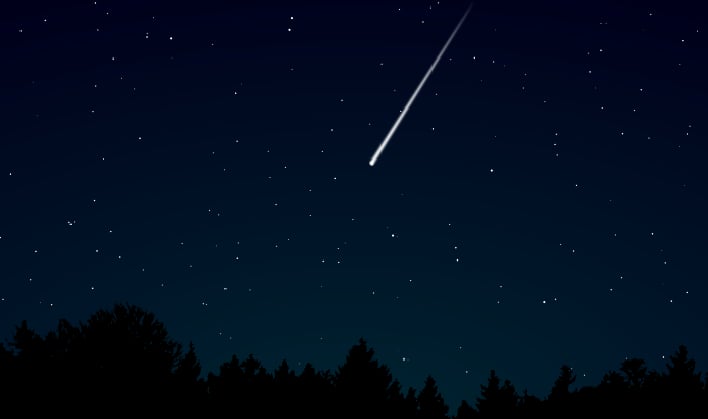How To Catch The Eta Aquariids Meteor Shower For A Shooting Star Light Show Spectacle

Meteors entering the Earth's atmosphere are not uncommon, with most being particles that are no larger than dust and sand. These fast traveling particles hit the upper atmosphere at speeds of up to 45 miles per second, as they flare and burn up before ever reaching the ground. According to NASA, the average person can view between 4 to 8 meteors per hour on any given night. However, meteor showers provide a stream of comets and asteroid debris that light up the night sky, and the month of May is teeing up two possible fireball shows.
Opening up the show is the eta Aquariids meteor shower. It will begin on the night of May 5th and last into the early hours of May 6th, around 3:00 am CDT. This particular meteor shower is comprised of the annual encounter of remnants from the famous Halley's comet. If you are wanting to find the best spot in the night sky to try and view shooting stars from this event, the point in the sky where the meteor shower appears to originate is the constellation Aquarius. The meteor shower gets its name from the brightest star in that constellation, eta Aquarii.
Bill Cooke, who leads NASA's Meteoroid Environment Office at NASA's Marshall Space Flight Center in Huntsville, Alabama, said, "It will be interesting to see if the rates are low this year, or if we will get a spike in numbers before next year's forecast outburst."
Those in the Southern Hemisphere will have the best opportunity for viewing the meteor shower, but if weather conditions are right, viewers could see up to 30 meteors per hour. With a waxing crescent Moon leaving the sky nice and dark, it should provide for an exciting show. The best time for viewing the shower will happen after 3 AM local time, so put on a pot of coffee and get up early.
The comet was not seen again until the late 1970s due to it being so faint. Then in 1995 astronomers realized the comet had become about 600 times brighter and went from a faint smudge to being visible with the naked eye. Further investigation showed that SW3 had actually shattered into several pieces, littering its own orbital trail with debris. By 2006, it was in nearly 70 pieces and has continued to break up further since then.
"This is going to be an all or nothing event. If the debris from SW3 was traveling more than 220 miles per hour when it separated from the comet, we might see a nice meteor shower. If the debris had slower ejection speeds, then nothing will make it to Earth and there will be no meteors from this comet," Cooke remarked.
So, mark you calendars and set your alarm clocks if you are wanting to view these two meteor showers this month. If you happen to take any pictures of light streaks littering the night sky, feel free to share with us here at Hot Hardware!

